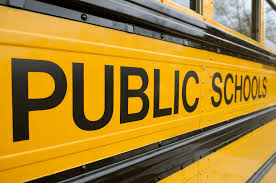No voter support? No problem! MN school boards can raise taxes

By Tom Steward | Watchdog Minnesota Bureau
ST. PAUL, Minn. — Minnesotans faced 39 school operating levy referendums on the ballot this fall, fewer than in any election since 1996, nixing one of every four proposals at the polls.
Chalk one up for taxpayers? Not exactly. Many school boards had already unilaterally raised school levies on their own long before Election Day, without seeking voter approval.
The 2013 Minnesota Legislature gave school boards the authority to effectively go behind the backs of local taxpayers that decline to raise their school taxes.
“The argument is the school board is locally elected and if the citizens don’t like what the school board does, they can vote them out of office and reverse the referendum decision that they made,” said Tom Melcher, director of school finance at the Minnesota Department of Education. “But I haven’t heard a lot of pushback.”
Educators still call it a “referendum,” but school board members now cast the only votes in deciding whether to impose an up to $300-per-pupil operating levy for five years without public approval.
“Given that the word is referendum, you’d think that yes, the levy authority is there because the voters approved it. But they didn’t, so we kind of have an oxymoron going here,” said Bob Porter, Minnesota Department of Education school finance specialist.
As school boards lined up to capitalize on their newfound power, the number of operating levy-free districts quickly plunged from 39 to nine. Only a handful of small, rural district boards resisted the temptation to up the ante on taxpayers with increased state aid as part of the equation: Cass Lake, Floodwood, Kelliher, Lanesboro, Littlefork-Big Falls, Prinsburg, South Koochiching, Underwood and Verndale.
“What the governor and the Legislature have done is taken away decision-making authority that used to be in the hands of voters, instead giving it to school boards, allowing them to raise taxes or impose taxes unilaterally,” said Jonathan Blake, a Freedom Foundation of Minnesota analyst.
Altogether, 123 school boards have taken advantage of the $300 provision to initiate, increase or convert their levy levels, Minnesota Department of Education figures show. Schools defend the process as a way to equalize educational opportunities for districts with a smaller property tax base, mainly outside the Twin Cities metro area.
LEFT OUT: Just nine MN school districts have held out against approving an operating levy, as more school boards go around voters and impose property tax hikes under new legislation.
“It was basically done to solve an equity problem because there are districts with nothing or very small amount of a levy next to a district with a $2,000 per pupil levy,” said Greg Abbott, communications director for the Minnesota School Boards Association. “So it was an effort to try and make things more equitable from district to district.”
Rush City schools tiptoed around taxpayers’ concerns before voting to max out at a summer board meeting.
“Board members discussed the need to be sensitive to citizen tax obligations, while providing for district needs related to adequately staffing buildings, maintaining district facilities, and staying current with curriculum and technology….this additional $300 per student levy will cost about $59 per year for $100,000 property value,” according to published school board minutes of a July 17 meeting.
Many property owners in districts statewide will be assessed for a $424-per-pupil “local optional revenue” operating levy approved by legislators, rather than voters. Technically, school boards can opt out of the levy, but in practice seldom do.
“The only way a district is going to generate less than the $724 is if the school board decides not to use all the levy authority that the Legislature has provided it,” said Porter, the state education finance expert. “Why would they not do that? The two basic reasons would be they think they can operate effectively without that revenue or they figure they’ll never be re-elected, if they approve of it.”
Where does that leave residents of North Branch, an east central community where voters turned down eight straight school levy proposals? Taxpayers will be assessed based on an operating levy referendum of $724 per pupil next school year, once finalized by the school board next month. To offset part of the cost, legislators upped the percentage of state aid, which depends on a district’s property values.
With part of the board-approved increase already in place, North Branch has already added 20 staff and resumed a Monday through Friday school week, after several years on a cost-cutting four-day schedule.
“Some people don’t like the fix, but it is what it is. And we have been asking for a change in funding for a long time,” said Deb Henton, superintendent of North Branch schools. “This is what the Legislature gave the opportunity for school boards to do, and our members have voted in favor of it and felt they had advocated long enough.”
The trade-off between less taxpayer control and more school board authority concerns at least one North Branch school board member.
“The majority of the people that voted me in there would not pass a levy because we’ve got a city that’s $62 million in debt,” said board member Randy Westby. ”The real estate market is declining even now, when things are starting to pick up overall, because we’re too reliant upon property taxes.”







